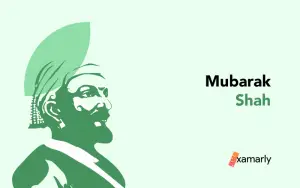A refined knowledge of ancient civilizations, dynasties, and kingdoms is crucial to understand the geography, history, political activities, and developments of a land. Such an area of learning within Indian history is the Mahajanapadas, the powerful kingdoms that dominated ancient India.
This article will provide you with closer insights into:
1. The evolution of Janapadas to Mahajanapadas.
2. Facts, features, and political system of the different Mahajanapadas of ancient India.
3. Their geographical distinction in the Indian subcontinent.
4. Their rich cultural and social history.
Read through this article to explore more about the early Indian civilization, the 16 Mahajanapadas, and their kings as this is a vital part of the Ancient Indian History syllabus for UPSC exams.
What are Mahajanapadas?
The Sanskrit word “Mahajanapada” is a composite word made up of the phrases maha and janapada, which signify “great” and “foothold of a people” respectively.
As per existing literature on ancient Indian empires, India was divided into sixteen regions or 16 Mahajanapadas each known by different names. These 16 regions were political bodies that ruled the Indian subcontinent from the 6th Century BC onwards, that is, before the advent of Buddhism and Jainism.
These ancient kingdoms of India were called Janas in Vedic texts and ancient literature. These Janas soon became big political bodies. Later, they merged and were renamed in the coming periods thereby giving birth to massive Indian cities.
How did Janapadas become Mahajanpadas?
The production of iron was considered a crucial component of the territorial state’s growth. With the increase in the manufacture of iron (or iron tools), Janapadas grew more and more powerful which led to them becoming Mahajanapadas.
Mahajanapadas at a Glance
Buddhist literature mention 16 Mahajanapadas that developed between the sixth and fourth century.
| Anga | Kuru |
| Assaka | Magadha |
| Avanti | Malla |
| Chedi | Matsya |
| Gandhara | Panchala |
| Kamboja | Surasena |
| Kasi | Vajji |
| Kosala | Vatsa |
Facts about the 16 Mahajanapadas
This table will give you the details about Mahajanapadas and their capitals:
| Mahajanapada | Mahajanapadas Capital City | Modern Location of Mahajanapada | Facts about Mahajanapada |
| Anga | Champa | Munger and Bhagalpur | Anga Mahajanapada is brought up in literary sources like the Mahabharata and the Atharva Veda. The Magadha empire overthrew the kingdom of Anga while it was ruled by the well-known king Bimbisara. Anga was an active center of trade and commercial activities with immense importance as it lay on principal trade routes and merchants of Anga regularly sailed to Suvarnabhoomi. It lies in the present-day states of Bihar and West Bengal in India. |
| Magadha | Girivraja/ Rajagriha | Gaya and Patna | Magadha is mentioned in literature such as the Atharva Veda. In this literature, it is described as a semi-Brahmanical settlement. It bordered Anga Mahajanapada in present-day Bihar of India, separated by the Champa River. Later on, it became a Jain center. As per Buddhist texts, the first-ever Buddhist Council took place in Rajagriha. |
| Kasi | Kasi | Banaras (Uttar Pradesh) | It was in Varanasi. According to the Matsya Purana, this city gained its name from Varuna and Asi rivers. |
| Vatsa | Kausambi | Allahabad | Vatsa is referred to as Vamsa. This region was governed by a monarchical form of government. In the 6th century BC, Vatsa Mahajanapada was a prosperous active center of trade located around the present-day city of Allahabad in India. The Vatsa capital was Kaushambi, a town that prospered because it served as a major gateway for goods and people. This famous city served as a hub for economic activity. Vatsa’s ruler, the famous king Udyana, was a powerful king who adopted Buddhism as his official religion. |
| Kosala | Sravasti (Northern Capital) Kushavati (Souther Capital) | Eastern Uttar Pradesh | It was in the present Awadh area of Uttar Pradesh in India. Sravasti and Kushavati were its capital. The renowned King Prasenajit governed Kosala, and his son Vidudabha took over after him. Ayodhya, Saketa, Banaras, and Sravasti comprised the Chief Cities of Kosala Mahajanapada. |
| Saurasena | Mathura | Western Uttar Pradesh | During Megasthenes’ time, this location was an active center of Krishna devotion. In addition, there was a strong presence of Buddhist traditions in the area. |
| Panchala | Ahichchatra and Kampliya | Western Uttar Pradesh | The northern Panchala capital was Ahichchatra, and the southern Panchala capital was Kampilaya. It is in the present-day state of Uttar Pradesh’s western region. Later, the government transitioned from a monarchical form of government to a republican form of government. Kanyakubja, commonly known as Kanauj, was a part of Panchal Mahajanapada. |
| Kuru | Indraprastha | Meerut and Southeastern Haryana | Kuru Mahajanapada is said to be based around Kurukshetra. Kuru later adopted a republican form of government. |
| Matsya | Viratnagar | Jaipur | The location of Matsya was in the South of Kuru and West of Panchala Mahajanapada. The capital was housed at Viratnagar after the founder king Virata. The region around present-day Bharatpur, Alwar, and Jaipur of India was the Matsya Mahajanapada in ancient times. |
| Chedi | Sothivati | Jaipur | Chedi Mahajanapada finds its mentions in the Rigveda. Sothivati served as Chedi Mahajanapada’s capital city. It was in the Bundelkhand region of present-day Central India. |
| Avanti | Ujjaini or Mahismati | Malwa and Madhya Pradesh | Avanti Mahajanapada played a pivotal role in the growth of Buddhism. Ujjaini and Mahismati acted as its Capitals. The present-day Malwa region and Madhya Pradesh of India are where Avanti was situated. |
| Gandhara | Taxila | Rawalpindi | Taxila was the capital of Gandhara Mahajanapada. Atharva Veda cites Gandhara. Gandhara Mahajanapada had many highly trained warriors and furious people. A significant center considering international trade and commercial activities. |
| Kamboja | Pooncha | Rajori and Hajra | Poonch served as the capital city of Kamboja. Kamboja Mahajanapada stretched from present-day Kashmir to the cis-Hindukush region. Kamboja was mentioned as a republic in several literary texts. |
| Ashmaka or Assaka | Potali/Podana | Banks of Godavari | The only Mahajanapada located in the Dakshinapantha i.e. the southern part of the Vindhya Range. Assaka ranged from present-day Telangana, Andhra Pradesh, and Maharashtra of India. It was located on Godavari banks. Pratisthan/Paithan region came under this Mahajanapada. One of its capital Potali was situated in present-day Nandura, Buldhana District., Maharashtra. |
| Vajji | Vaishali | Bihar | This Mahajanapada that lay in the Trihut division, north of Ganga, was ruled by Vajjis. Vaishali was its capital. The main clans residing in this Mahajanapada were Licchavis, Vedehans, Jnatrikas, and Vajjis. Mahavira came from the Jnatrikas clan. |
| Malla | Kusinara | Deoria, Uttar Pradesh | Buddhist texts like the Anguttara Nikaya and Jain scriptures and the Mahabharata make a note of this. Malla used to be a republic. Kusinara, its capital was a famous city located in what is now Deoria, Uttar Pradesh in India. |
Features of the Mahajanapadas
There are seven features or main constituents of Mahajanapadas of India. They are listed below:
- The King
- The Minister
- The Country
- Fortified City
- Treasury
- Army
- Ally
Political Structure of the Sixteen Mahajanapadas
- Many states in ancient India had monarchical forms, but some of them, known as Ganas or Sanghas, had republic forms of governance. In ancient oligarchies known as Ganasanghas, the king was chosen and oversaw affairs of the state with the aid of a council. Vajji was a well-known Mahajanapada who presided over the Sangha system of government.
- The founders of Buddhism and Jainism came from republican nations.
- There was a capital in each Mahajanapada.
- In order to defend themselves from invasion by rival monarchs, the majority of them had forts built around them.
- These new rulers, known as Rajas, kept constant armies.
- Additionally, taxes were levied against the populace. Typically, crops were taxed at 1/6th of their worth. This practice was known as Bhaga or sharing.
- All tradespeople, including artisans, herders, hunters, and traders paid taxes.
Gana-Sanghas vs Kingdoms
| Gana – Sanghas | Kingdoms |
| 1. The chief post, referred to as Ganaraja or Ganapati, was not hereditarily determined. | 1. The founder King along with his family had all of the power. |
| 2. The Ganasanghas were situated in or around eastern India’s Himalayan foothills. | 2. Many of these kingdoms were located in the lush alluvial expanses of the Ganga valley. |
| 3. Under Ganasangha, a representative government system was in place. The council met in a space known as Santhagara to debate and examine the problems. Wooden blocks called Salakas were used for voting, and a Salaka-Gahapaka (vote collector) ensured accuracy and impartiality. | 3. With the assistance of ministers and advisory bodies like the Parishad and Sabha, the king exercised political power. As the idea of the king’s divinity spread, the significance of public gatherings diminished while priestly rituals gained importance. |
| 4. Only two strata existed in the Gana-Sanghas: the Kshatriya Rajakula (ruling family) and the Dasa Karmakara (slaves and laborers). | 4. Caste loyalty and kingly fidelity were emphasized. |
| 5. The Gana Sanghas were more hospitable than the kingdoms. Owing to this tolerance, Mahavira (Jainism, a member of the Vajji confederacy) and Buddha (Buddhism, a member of the Shakya clan) had more freedom to promote their ideas in Gana-Sanghas over Kingdoms. | 5. The social, religious, and religious philosophy of the Brahmans was more deeply ingrained in the kingdoms. |
Janapadas vs Mahajanapadas
The Vedic period in India had two contrasting realms: the Janapadas and the Mahajanapadas. Janapadas were little realms where different tribes lived and worked together, while Mahajanapadas were kingdoms.
The Janapadas, which are the significant regions of Indian history, existed in the Vedic era (around 1500 BC) and were followed by the Mahajanapadas. The Mahajanapadas, on the other hand, were large and developed during the Vedic period in India, and had empires that stretched across the entire Indo-Gangetic Plain.
The name Janapada is extracted from the Sanskrit word “Jana” and hints at a tribal way of life. Several Janapadas existed before Buddha’s time and were situated in the northwestern region of the Indian subcontinent.
During the pre-Buddhist era, the northern part of India was carved out into Janapadas with distinct boundaries. The most notable Janapada was known as Mahajanapada, which means “foothold of the people” and was called so after a Kshatriya tribe.
Got the information you were looking for? Consider Examarly to supercharge your preparation for UPSC CSE with tons of study material for free.
Conclusion
Although not a repeated question in the UPSC exam, the Mahajanapadas of India along with their chronology and significance are a must-know for UPSC aspirants. This topic will enhance your knowledge of Ancient India and help you understand how the 16 Mahajanapadas map the various developments that come later in Indian history.
FAQs about the 16 Region
What are the names of 4 kingdoms that survived by the mid-6th Century BC?
The 4 out of 16 Mahajanapadas of India that survived by the mid-sixth century BC were: Vatsa, Avanti, Kosala, and Magadha.
Which Mahajanapada had its capital alongside the Godavari river?
Ashmaka or Assaka Mahajanapada
Mathura Was The Capital Of Which Mahajanapada?
Mathura was the Capital of Saurasena Mahajanapada.
How did the Mahajanapadas emerge?
The Mahajanapadas emerged as a result of the decline of the Vedic period when small tribal communities merged to form larger kingdoms. They were established by powerful monarchs who were able to consolidate their power and expand their territories.
What was the significance of Mahajanapadas in ancient India?
The Mahajanapadas played a crucial role in shaping the cultural, social, and political landscape of ancient India. They provided the foundation for the rise of the Mauryan Empire and the spread of Buddhism.






